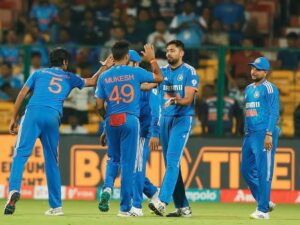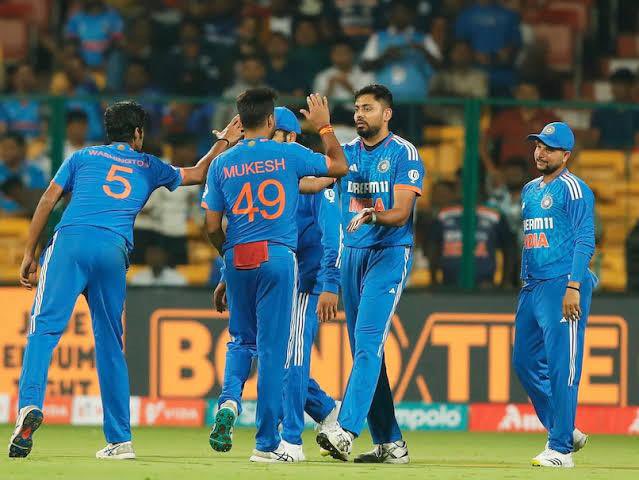
Sometimes, thrilling matches throw light at reality. The third India-Afghanistan T20I, decided after the second Super Over, was one such occasion. It showed that India’s bowling reserves are not as rich as the first-choice options. The team will have a formidable attack when the top guns are back. But without them, and looking at the future, the signs are not encouraging.
It is difficult to overlook the role played by the bowlers in whatever success India have had across formats in the last few years. Jasprit Bumrah, Mohammed Shami, Mohammed Siraj, Ravindra Jadeja and Kuldeep Yadav are among the best in the world. Arshdeep Singh and Axar Patel are able back-ups. Ravichandran Ashwin chips in when summoned.
The question that the team management and the selectors will try to address now or in the immediate future is regarding the next rung, especially for the white-ball formats. The fast bowlers are ageing and they are injury-prone. The principal spinners have been around for a long time and even though they are not completely over the hill, they cannot be considered long-term solutions.
The Afghanistan series was an opportunity to test resources and try out those who could possibly serve the team after the T20 World Cup. Surely, none of Bumrah, Shami or even Jadeja will be around for a long time after that event in June.
Mukesh Kumar and Avesh Khan are being tried out as far as pace is concerned. Ravi Bishnoi and Washington Sundar are the spinners. It can’t be said with conviction that they exude the kind of confidence their immediate predecessors did. It’s not only about economy rates — which were poor anyway — but the impact these bowlers made. Afghanistan almost winning the match while chasing 213 is not what a high-profile team expects from its next generation of bowlers.
For the Latest Sports News: Click Here
Rohit Sharma silenced critics with breathtaking 5th T20I hundred.
Played a captain’s innings!@ThumsUpOfficial @debasissen @ThumsUpOfficial #RohitSharma #IndianCricketTeam #INDvAFG #INDvsAFG pic.twitter.com/qrBTElqngQ
— RevSportz (@RevSportz) January 18, 2024
Mukesh and Avesh were told to bowl outside off in the closing stages. It’s a decent ploy if applied properly, which forces the batters to hit on one side of the wicket, thereby reducing their scoring options. It also showed that the captain didn’t trust these players to bowl wicket-taking deliveries, aimed more at the stumps. Mukesh took two wickets in three matches and conceded 9.80 per over. Avesh took one for 55 in four overs. This lack of sting is a concern going ahead.
Career numbers are better when it comes to Bishnoi and Washington. Both have done the job given to them without going for too many runs. But are they your genuine wicket-taking bowlers, like Yuzvendra Chahal? Bishnoi relies mostly on the googly and thus runs the risk of becoming predictable. Washington is one-dimensional with his flat off-breaks, which don’t turn a lot. In shorter formats, variation is the key and neither has shown much of it in their international journey so far.
It will look a lot better when Bumrah returns, with Shami and Siraj. If fit, all three are certainties for the T20 World Cup, along with Jadeja and Kuldeep. With Arshdeep and Axar, this will be a handy attack. But most of them will be temporary solutions, given that not many of them have a lot left in the tank. A great attack for the World Cup and big voids soon after is not an ideal scenario.
The national T20 and one-day championships this season did not produce notable prospects. So the think-tank has to look at the IPL to find out the suitable boys in the bowling department. Batting has a problem of plenty. In bowling, the issue is just the opposite. Unless this box is ticked soon, the team might struggle to hold on to the respectable position it has earned over years of hard work.
Also Read: Indian Women’s Hockey Needs Redemption Against Japan




